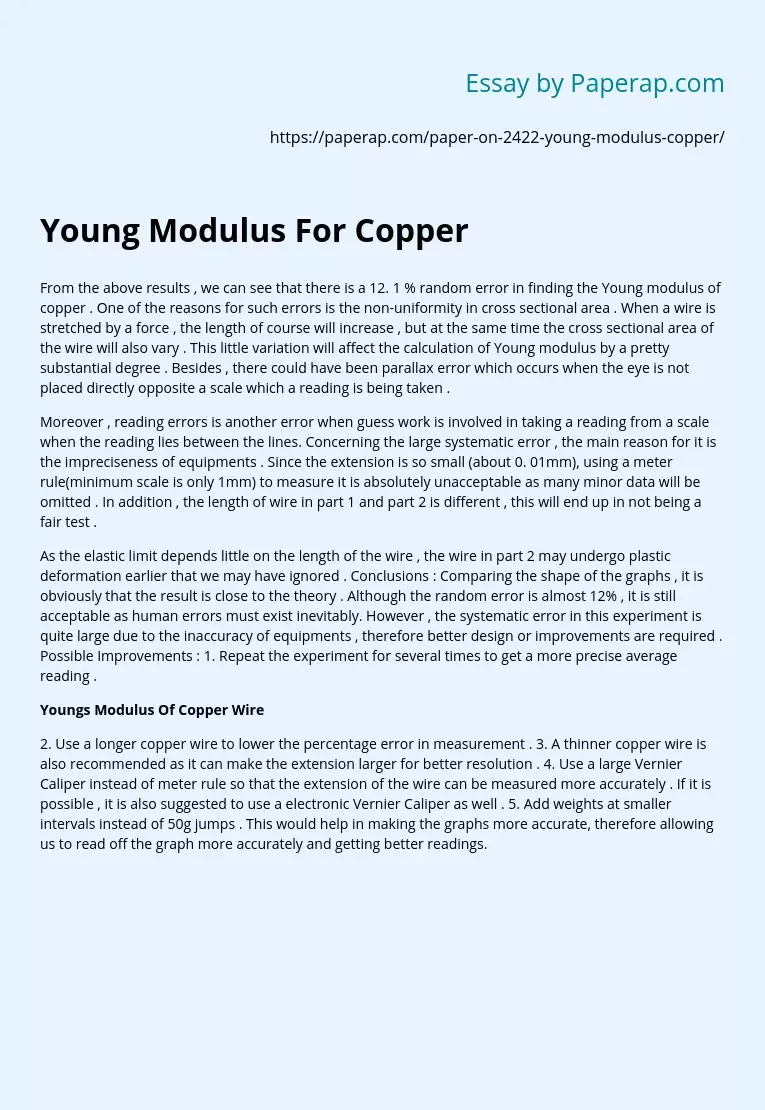Young Modulus For Copper
From the above results , we can see that there is a 12. 1 % random error in finding the Young modulus of copper . One of the reasons for such errors is the non-uniformity in cross sectional area . When a wire is stretched by a force , the length of course will increase , but at the same time the cross sectional area of the wire will also vary . This little variation will affect the calculation of Young modulus by a pretty substantial degree . Besides , there could have been parallax error which occurs when the eye is not placed directly opposite a scale which a reading is being taken .
Moreover , reading errors is another error when guess work is involved in taking a reading from a scale when the reading lies between the lines. Concerning the large systematic error , the main reason for it is the impreciseness of equipments . Since the extension is so small (about 0. 01mm), using a meter rule(minimum scale is only 1mm) to measure it is absolutely unacceptable as many minor data will be omitted .
In addition , the length of wire in part 1 and part 2 is different , this will end up in not being a fair test .
As the elastic limit depends little on the length of the wire , the wire in part 2 may undergo plastic deformation earlier that we may have ignored . Conclusions : Comparing the shape of the graphs , it is obviously that the result is close to the theory . Although the random error is almost 12% , it is still acceptable as human errors must exist inevitably.
However , the systematic error in this experiment is quite large due to the inaccuracy of equipments , therefore better design or improvements are required . Possible Improvements : 1. Repeat the experiment for several times to get a more precise average reading .
Youngs Modulus Of Copper Wire
2. Use a longer copper wire to lower the percentage error in measurement . 3. A thinner copper wire is also recommended as it can make the extension larger for better resolution . 4. Use a large Vernier Caliper instead of meter rule so that the extension of the wire can be measured more accurately . If it is possible , it is also suggested to use a electronic Vernier Caliper as well . 5. Add weights at smaller intervals instead of 50g jumps . This would help in making the graphs more accurate, therefore allowing us to read off the graph more accurately and getting better readings.
Young Modulus For Copper. (2019, Dec 05). Retrieved from https://paperap.com/paper-on-2422-young-modulus-copper/

